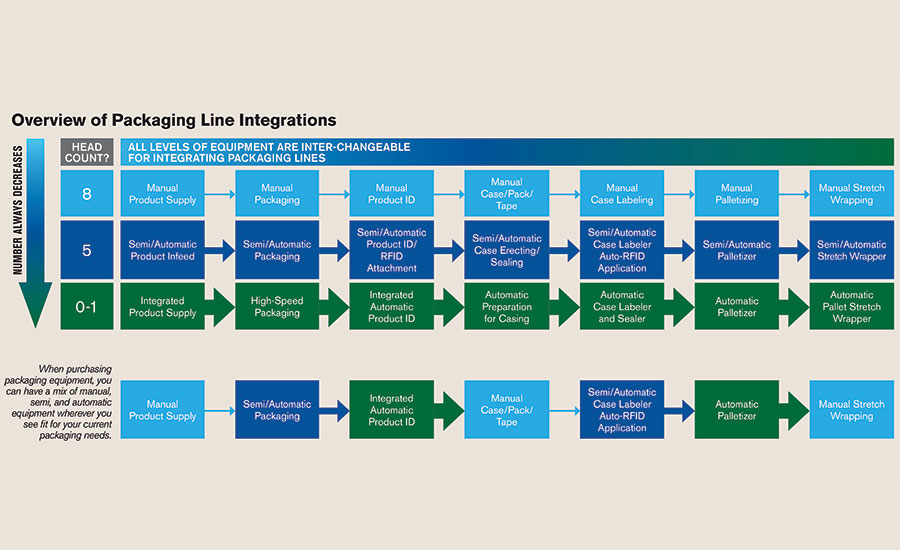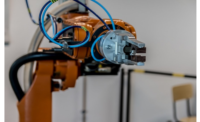Are you being stretched too thin? If so, adding more people to your labor force is not the only option you have. Here are seven signs you are ready to add automation to your packaging line.
1. Target Markets and Product Demand
Understanding your target markets and projecting for potential growth in advance will help justify new investments in machinery. Ask yourself: Will you be adding new products in the coming year? Do you anticipate a large amount of growth? Pay attention to the interests of your target market and how they align with your product mix. Is something happening in the news or current events that show a need for your product? On the other hand, you may be able to justify automation due to a decrease in demand. If the markets you serve are expected to see a decrease in demand, automation can potentially save you in overall operations costs, reducing your labor force and, therefore, saving in overhead costs. The ROI from automation can be quick and reducing headcount can save quite a bit.

2. Is Demand Too Much for Your Labor Force?
Labor force is often the first place that is reviewed when looking into packaging automation. Demand is increasing and your team is barely making its targets. Your customers and/or retailers are becoming agitated or, in worst-case scenarios, are dropping you altogether. Increased demand that puts strain on limited bandwidth also causes stress in the work environment and can lead to high labor turnover. If you are experiencing a significant amount of employee turnover, this can be directly related to your packaging processes and is a good reason to review your options in automation. An option you might first consider is adding additional shifts, but make sure you research the impact on your current processes and the manual machinery being used. Additional shifts will require more frequent preventative maintenance to ensure proper safety and up-time. This also means that the scheduling of downtime will need to be factored into your daily, weekly or monthly checks. Keep in mind that the ability to attract, train and keep employees in a tight labor market can add additional stress.
3. Labor Cost Vs Automation Cost
Let’s say you have one employee working the manual equipment. That person’s pay is $15 per hour, fully loaded, including social security payments, worker’s comp, unemployment insurance, etc. This employee costs your business around $31,200 or more. Now imagine 20 or more employees making the same wage per hour. In cases like this, a piece of packaging machinery like an automated l-sealer can pay itself off in less than a year while reducing your labor costs.
4. Packages Per Minute (PPM)
Determine what your need for output, or Packages-Per-Minute (PPM), is now and what you anticipate it will be over the next 12-24 months. Is your product accumulated and brought over to the packaging equipment in bulk or is it fed directly from production to packaging? If it’s brought to your packaging line in bulk, your packaging machinery determines your PPM. In this case, you could run one day on the packaging lines instead of two. You just need machinery that runs fast enough. There is a potential here to save tremendously depending on your labor cost structure with automation.
5. Material Waste Is High
Often when manual labor is used in packaging lines, there will be an increased amount of material waste. An example of automation reducing waste can be switching from manual pallet wrapping to semi-automated pallet wrappers: Products are palletized to fit on an average pallet size of 40” x 48” with no overhang and stacked up to 64” tall. Manual wrapping shows an inconsistent 20% pre-stretch by employees, but a semi-automatic pallet wrapper consistently pre-stretches film to 200% along with a consistent amount of film being used. This dramatically drops film usage by about 80 feet per load. Machines are much more precise than humans and can reduce, or in some cases eliminate, packaging material waste — thereby reducing overall operating costs quite significantly and improving product integrity.
6. Too Much Simplistic Repetitive Work
Is your labor force doing a lot of repetitive work that a machine could do faster? If the answer is yes, investigate the task that is in question for a machine that can accomplish this for you. An example of repetitive, simple operation elimination is a case erector that removes the labor force required to form the boxes that products are placed and shipped in. In some cases, the entire case erecting, filling and sealing processes can be managed with one machine, thereby eliminating these steps that your team must take at the end of a packaging line.
7. Different Products and Lots of Changeovers
An industrial packaging customer that produces several different items per week on its floors had a problem with product changeovers taking anywhere from four to eight hours to complete. Utilizing two packaging lines at 20 packages per minute, the equipment was a blend of legacy design and old technology. During these tedious changeovers, as many as 20 employees were hanging around while they waited for the next product and machinery to be ready.
It was determined that the best solution for this customer was to integrate high-speed packaging lines and to re-imagine the packaging process into a single-line layout that supported the ability to package 40 products per minute at multiple product shapes and sizes. Not only did this cut down on the time spent packaging products, it also drastically reduced the amount of time it took to change over products on the lines — making it an almost seamless process. What once took a full shift to switch from one product to the other now takes no time at all. No more employees sitting idly for hours. Additionally, this company opted for 100% electric machines. With zero pneumatic machinery, the lower utility costs added to the huge savings from the packaging line changes.




